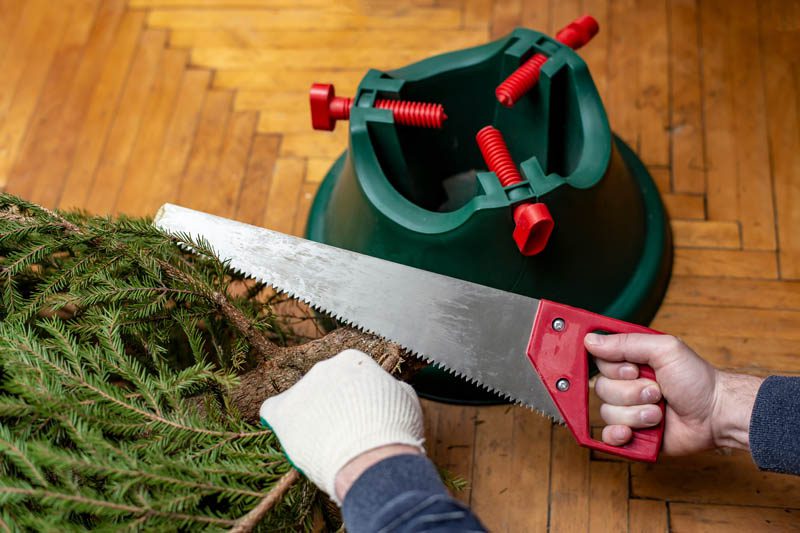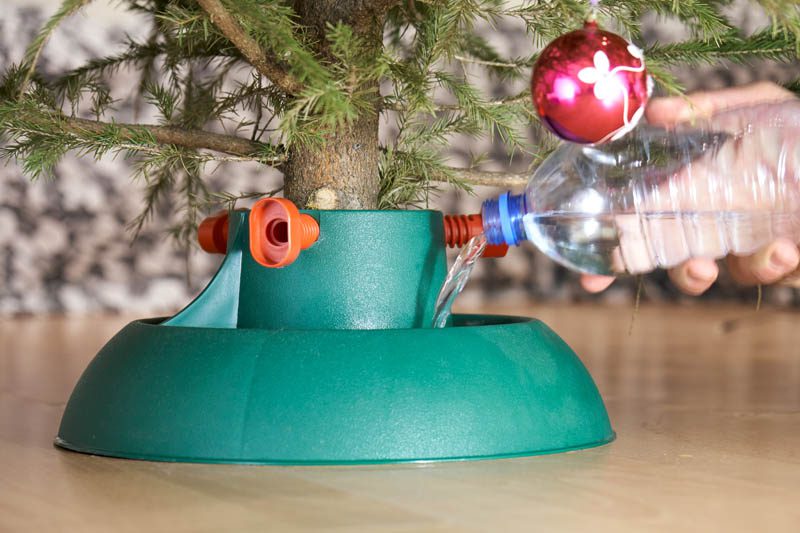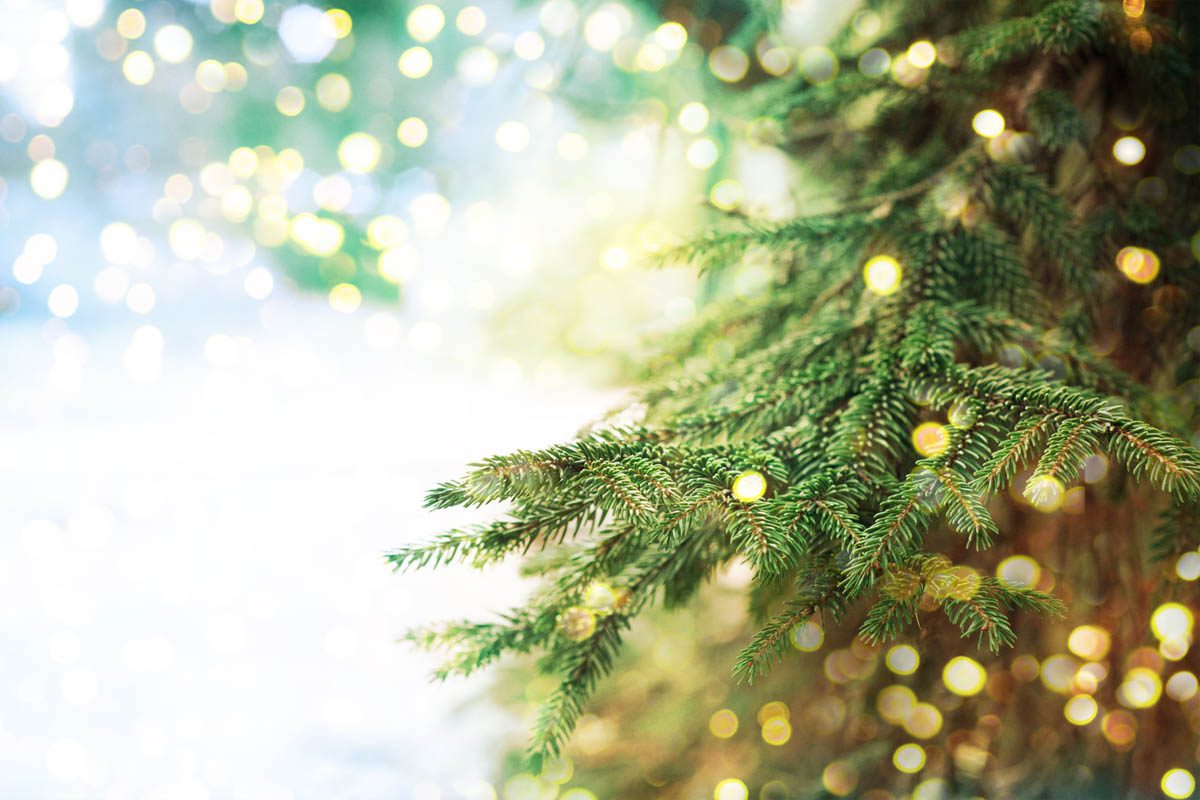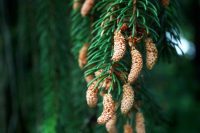A fresh Christmas tree is one of the highlights of decorating the home during the festive season. With so much time and money invested in purchasing and decorating a Christmas tree, it’s important to keep it as happy and healthy as possible so that it stays in tip top shape.
Fresh Christmas trees may be chopped down, or live in their pot, and the care is similar for both types of trees.
How to care for a cut Christmas tree
Before you head out, measure the height, depth and width of the area you plan to keep your tree so that you know what size tree will fit in the area. Bring along a tape measure so you can measure the tree.
Choose a Christmas tree that has been cut down as recently as possible, looks healthy, and has no broken or missing branches. Gently tug the needles, freshly cut trees should hold on to them. Find a branch that is not too thick, and bend it, it should bend, but not snap. Lift the tree a few cms or inches off the ground and gently drop it (making sure it doesn’t topple over). The tree should retain its needles.
When a Christmas tree is cut, it forms a protective seal over the exposed part, which is mother nature’s way of reducing the risk of pathogens entering the tree. Unfortunately, this also prevents the tree from taking in water. When you arrive home, saw 1-2 cm from the bottom of the trunk. Normally, the roots are responsible for the uptake of water, which travels through the plant via vascular tissue known as the xylem. Without roots, the tree uptakes water directly via the xylem.

Once the base has been cut, place the tree straight into the water reservoir to allow it to take in water.
How to care for a live Christmas tree
Caring for a live Christmas tree is much the same as the cut Christmas tree, and requires water to ensure it remains well hydrated. Most growers will plant live Christmas trees in a medium which contains slow-release fertiliser. As most Christmas trees will be in the house for a maximum of two months, fertilising the tree can wait until the festive season is over. If you do decide to fertilise the tree while it is inside, use a fertiliser that is non-toxic to pets.
How much water does a Christmas tree drink in a day?

As a guide, a Christmas tree will drink 1 litre (1 quart) of water per 2.5 cm (1 inch) of stem. The average Christmas tree trunk is 7.5 cm (3 inches), and will therefore drink as much as 3 litres (3 quarts) per day. Change the water daily, and do not allow the reservoir to dry out.
Christmas tree preservatives
These products are added to the water reservoir the Christmas tree sits in, in order to prolong the life of the cut tree. Preservatives help the tree take up water and nutrients as well as inhibit fungi and bacteria. There are commercially prepared preservatives or homemade recipes that may include corn syrup, bleach and aspirin.
Information is conflicting regarding the use of preservers and nutrients. The National Christmas Tree Association recommend water only while the University of Kentucky – College of Agriculture recommends 1 cup of corn syrup, plus 3 tablespoons (45 ml) of bleach to 3.7 litres (1 gallon) of water. The bleach is said to thin out the sticky pitch from the xylem, while the corn syrup provides a carbohydrate source for the tree.
Unfortunately, some of the ingredients in commercial preparations and homemade recipes are extremely toxic to pets. Pets are unable to metabolise aspirin efficiently which can lead to acute liver failure.
Does adding aspirin to Christmas tree water work?
Some suggest that aspirin can help the Christmas tree take up water more effectively, however, there is no evidence that it actually works. Aspirin is toxic to cats and dogs, therefore, we do not recommend the use of aspirin in Christmas tree water.
Extending the life of a live or cut Christmas tree
The two most important factors for extending the life of a Christmas tree are keeping it away from heat (heaters, fires, furnace vents, sunny windows) and maintaining a constant supply of fresh water. Preservers are not necessary and can be toxic to children and household pets.
Pet safety
- Most Christmas trees are non-toxic to pets but the sharp needles can still cause trauma to the mouth and gastrointestinal tract if consumed. Maintaining a constant supply of water will reduce needle loss in both cut and live Christmas trees.
- Fertilisers safe for pets can be used for fresh Christmas trees, but always read the label to ensure they are non-toxic, or better still, wait and fertilise when the tree has been removed from the house.
- If you do decide to add preservers to the reservoir, make sure you only use products labelled as non-toxic to pets, and ensure the pet cannot access water in the reservoir.
- Always unplug Christmas lights from the socket when you are not around to supervise pets.
- Secure the Christmas tree to a wall by placing clear fishing line around the centre of the tree and securing to a hook in the wall.
- Do not place edible Christmas decorations on the tree, especially those that contain chocolate which is toxic to cats and dogs.
- Place breakable ornaments high on the tree, and non-breakables on the lower branches.
Julia is a writer and landscape consultant from Wollongong with a love of horticulture. She had been an avid gardener for over 30 years, collects rare variegated plants and is a home orchardist. Julia is passionate about learning and sharing her knowledge of plant propagation and plant toxicology. Whether it’s giving advice on landscape projects or sharing tips on growing, Julia enjoys helping people make their gardens flourish.




